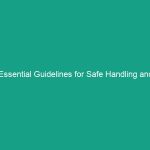Good Morning Team!
Today, we’re going to dive into an important topic that affects not only our Workplace Safety but also our personal lives—road rage. As we spend time on the road, it’s vital to understand how to tackle this issue effectively. Why is this important? Because road rage can lead to dangerous situations, accidents, and even affect our mental well-being. By addressing this, we can ensure safer driving for ourselves and others.
Understanding Road Rage
Road rage refers to aggressive or angry behavior exhibited by drivers. It can manifest in various ways, such as excessive honking, tailgating, making rude gestures, or even physical confrontations. The importance of understanding road rage in the context of Workplace Safety cannot be overstated. Employees who face road rage incidents may experience stress, anxiety, and distraction, which can lead to a decline in overall job performance.
One common misconception is that road rage only occurs in extreme situations; however, it can stem from minor annoyances like slow drivers or unexpected lane changes. Recognizing this can help us manage our emotions better while driving.
Key Hazards, Risks, and Safety Considerations
Road rage poses significant Hazards not just to the aggressive driver but also to other road users. Here are some specific risks associated with road rage:
- Increased Accident Risk: Aggressive driving can lead to collisions, causing injuries or fatalities.
- Escalation of Conflict: What begins as a minor annoyance can escalate into dangerous confrontations.
- Mental Health Impact: Experiencing or engaging in road rage can lead to long-term anxiety and stress.
Ignoring these risks can result in real-world consequences. For instance, an angry driver may make impulsive decisions, leading to accidents. It’s crucial to recognize these consequences and take proactive measures to manage our emotions while driving.
Best Practices, Procedures, & Actionable Advice
Now that we understand the hazards, let’s discuss some Best Practices to tackle road rage effectively:
1. Stay Calm and Breathe
When faced with aggressive drivers, take a deep breath. Remaining calm can prevent the escalation of your emotions. If you feel anger rising, pull over safely and take a moment to regroup.
2. Don’t Engage
If someone is exhibiting aggressive behavior, avoid eye contact and don’t respond to gestures. Engaging can escalate the situation further.
3. Use Defensive Driving Techniques
Practice defensive driving by maintaining a safe distance from other vehicles, using turn signals, and anticipating the actions of other drivers. This can help you avoid potential conflicts.
4. Plan Ahead
Allow yourself extra time to reach your destination. Rushing can increase stress levels, making you more prone to road rage. Consider checking traffic updates before heading out.
5. Reflect on Your Emotions
Recognize when you’re feeling frustrated and reflect on the reasons behind it. Is it the traffic, the weather, or something else? Understanding your triggers can help you manage your reactions better.
6. Share the Road
Be mindful of other road users, including cyclists and pedestrians. Everyone deserves respect on the road, and showing consideration can create a more positive driving Environment.
7. Seek Help if Necessary
If you find yourself frequently experiencing road rage, consider talking to a professional. Anger management classes can provide valuable strategies to cope with aggressive feelings.
Case Studies: Real-World Incidents
Let’s look at a few real-world incidents where road rage led to serious consequences:
- Incident A: A driver tailgated another vehicle, leading to a high-speed chase that resulted in a multi-car collision. This incident highlights the importance of maintaining a safe distance.
- Incident B: Two drivers engaged in a verbal confrontation at a stoplight, which escalated into a physical fight. This shows how engaging in aggressive behavior can lead to dangerous situations.
These examples stress the importance of applying the Best Practices we discussed earlier to prevent such incidents from occurring.
Regulations, Standards, and Compliance
While there are no specific Regulations governing road rage, understanding general traffic laws is essential. Following speed limits, yielding to pedestrians, and adhering to traffic signals are all part of Safe Driving Practices. Compliance with these laws helps protect everyone on the road, including you and your colleagues.
Employee Engagement & Discussion
Now, let’s open the floor for discussion. What Safety challenges have you encountered related to road rage? How do you think we can support each other in managing stress while driving? Sharing experiences can provide valuable insights and help us all develop better strategies.
Conclusion & Key Takeaways
To wrap things up, tackling road rage is essential for safer driving. Remember the key points we discussed:
- Stay calm and breathe during stressful situations.
- Avoid engaging with aggressive drivers.
- Practice defensive driving.
- Plan ahead to reduce stress.
- Reflect on your emotions and triggers.
- Share the road and show respect to all users.
- Seek help if necessary.
By applying these practices, we can create a safer driving environment for everyone. Thank you for your attention today and for your commitment to prioritizing safety!


